The aluminium industry in India is strategically well-placed and is one of the largest producers in the world. India’s rich bauxite mineral base renders a competitive edge to the industry as compared to its counterparts globally.
The four major primary producers in India at the forefront of aluminium production are the privately owned Hindalco Industries Ltd, Vedanta Aluminium Ltd., Bharat Aluminium Co. Ltd. and the public sector undertaking National Aluminium Co. Ltd.
| Installed Capacity Of Aluminium (2018–19) | |||
|---|---|---|---|
| Sector | Company | Plant | Annual capacity (MT) |
| Public | National Aluminium Co. Ltd. | Angul (Odisha) | 460,000 |
| Private | Bharat Aluminium Co. Ltd. | Korba (Chattisgarh) I | 245,000 |
| Korba (Chattisgarh) – II | 325,000 | ||
| Hindalco Industries Ltd. | Aditya (Odisha) | 360,000 | |
| Hirakud (Odisha) | 215,000 | ||
| Mahan (Madhya Pradesh) | 360,000 | ||
| Renukoot (Uttar Pradesh) | 345,000 | ||
| Madras Aluminium Co. Ltd | Mettur (Tamilnadu) | 40,000 | |
| Vedanta Aluminium Ltd. | Jharsuguda-I (Odisha) | 500,000 | |
| Jharsuguda-II (Odisha) | 1,250,000 | ||
The aluminium industry comprises two basic segments: upstream and downstream. The upstream segment produces primary or “unwrought” aluminium from smelting of calcined alumina, which is produced from bauxite. Approximately 4 kg of bauxite is required to produce 3 kg of alumina and 1 kg of aluminium. Primary aluminium is the starting block for aluminium pr oducts and is mainly in the form of ingots and billets.
- Aluminium Ingots – Introduction
- Ingots are the material that is cast into a shape suitable for further processing and are produced through the smelting process.
- Ingots are remelted a nd further processed into a large number of products for various downstream applications.
- Usage is in industries engaged in casting, utensils, automobiles, aerospace, lithium batteries, currency coins and others.
- Size of ingots: 740 mm x 170 mm x 114 mm.
- Weight of Ingot: 22.7 kg +/- 1.5 kg each on average.
- Exports – India
| Aluminium Ingots Export From India (in MT) | |||
|---|---|---|---|
| Cargo | FY 2017–18 | FY 2018–19 | |
| Aluminium Ingot | 1,370,375 | 1,538,455 | |
Exports were mainly to Malaysia (18%), USA (12%), Republic of Korea (10%), Turkey (9%), Mexico (6%), Italy (5%), Taiwan & Spain (4% each) and Japan (3%)
- Mode Of Export
| Containerized Export | |||
|---|---|---|---|
| Port | Company | CY 2020 – In TEUs | |
| Visakhapatnam | HINDALCO | 9,028 | |
| VEDANTA | 24,464 | ||
| BALCO | 5,133 | ||
| NALCO | 3,465 | ||
| Total | 42,090 | ||
Note: 1 TEU is approximately 25 MT
| Break-bulk Export (April 2020 to December 2020) | |||
|---|---|---|---|
| Port | Qty (MT) | ||
| Gangavaram | 62,000 | ||
| PICT (Paradip) | 31,471 | ||
- Standard Operating Procedure –For Break-bulk Export Shipments
In view of reduced ocean freight in break-bulk shipments owing to larger parcel size, recently most overseas buyers prefer the cargo to be shipped in break-bulk from India.
- Process Flow For Exports In Break-Bulk
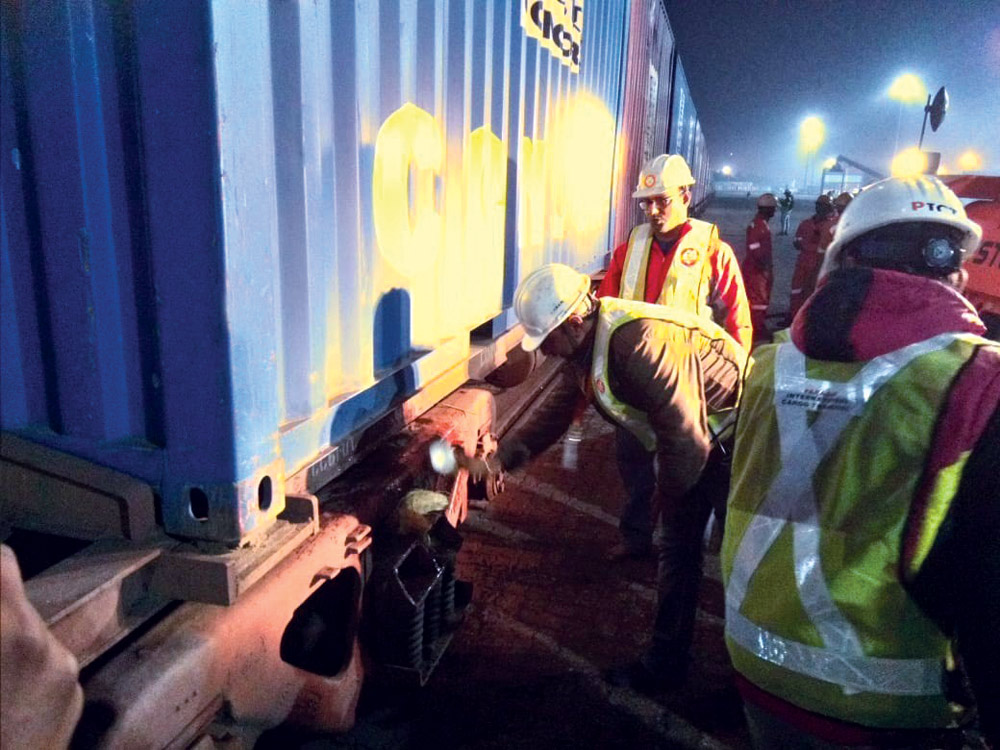
Receipt of laden DSO containers at railway siding (ingots inside containers are in bundles of 1 MT each with approximately 22 ingots per bundle)
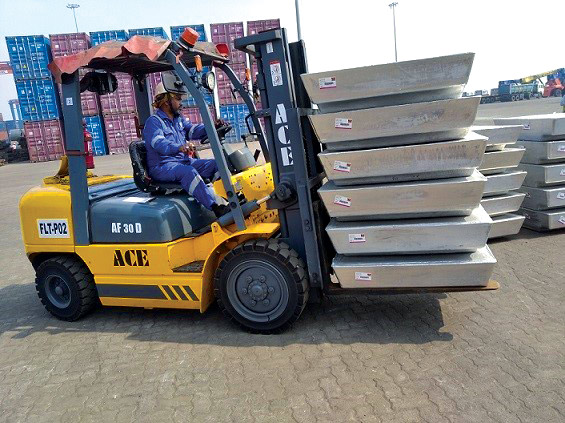
De-stuffing the containers at yard using forklifts
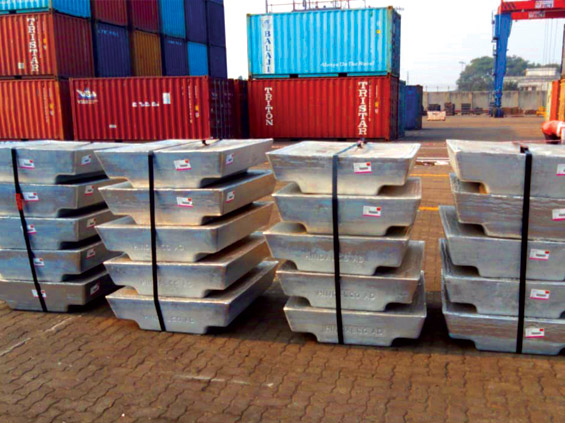
De-stuffing the containers at yard using forklifts
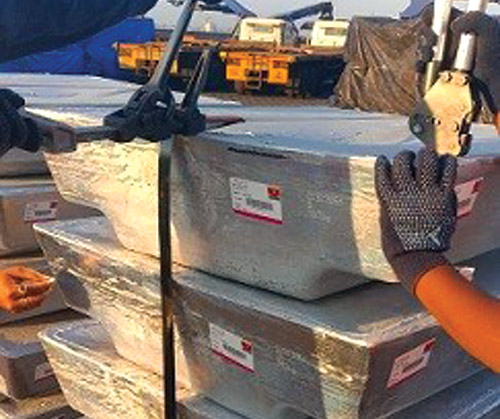
Unitisation of bundles using industrial-grade straps and cargo stacking at yard
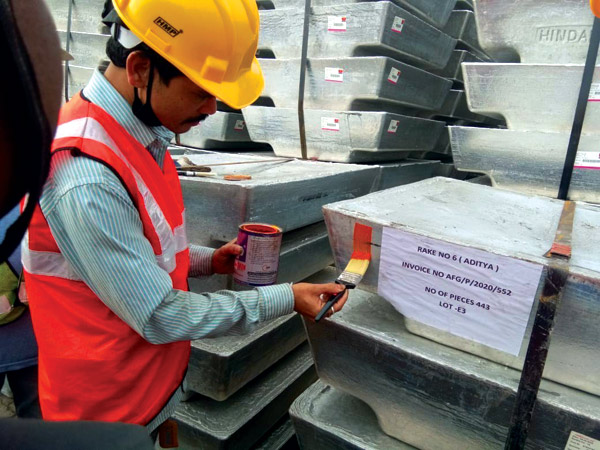
Color coding the cargo for segregation as the basis of the sequence for discharge port/buyer
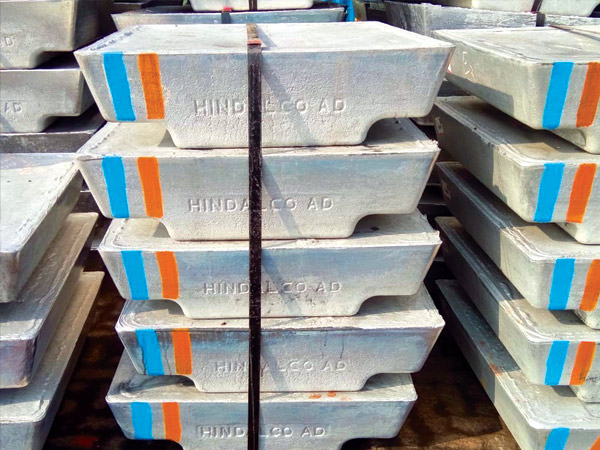
Color coding the cargo for segregation as the basis of the sequence for discharge port/buyer
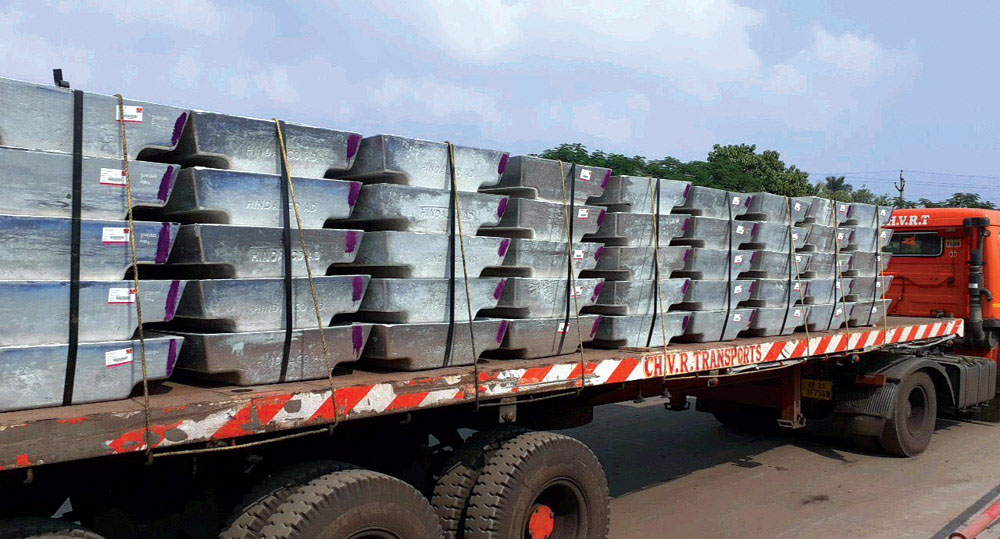
Loading the cargo onto trailer for transportation to wharf

Unloading of cargo at wharf and loading into vessel using ship gear
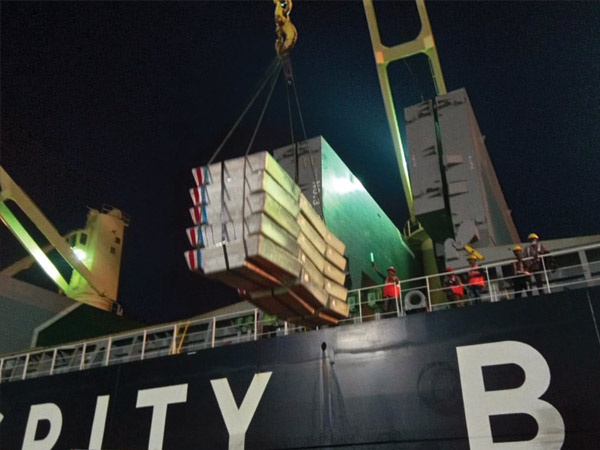
Unloading of cargo at wharf and loading into vessel using ship gear
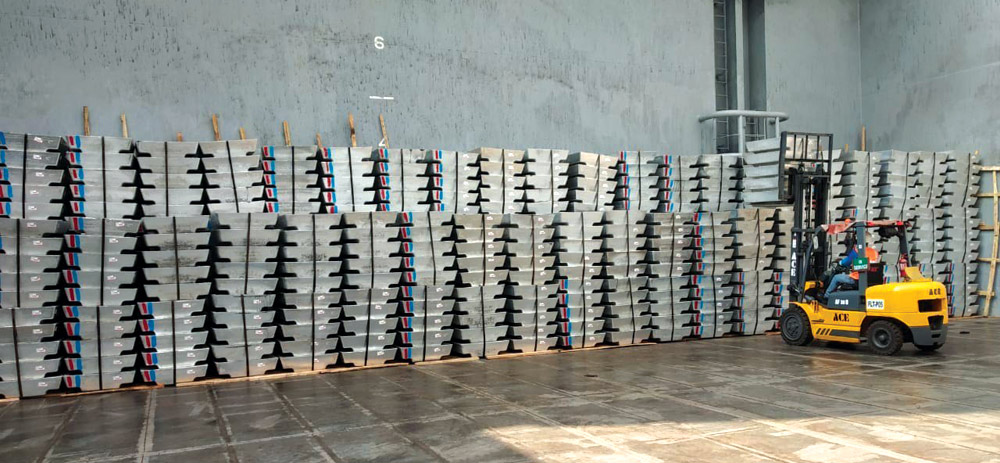
On-board stacking inside vessel holds using forklifts

Lashing and choking with adequate fumigated dunnage inside vessel hold to avoid metal-to-metal contact

Lashing and choking with adequate fumigated dunnage inside vessel hold to avoid metal-to-metal contact
- Paradip International Cargo Terminal, Paradip – an ideal gateway for ingot export
- Clean-cargo terminal at Paradip port, having two full-length rail sidings, with one line dedicated to steel & aluminium movements
- Adequate yard space to handle larger parcel size
- Minimal pre-berthing delays and higher load rate with reduced turnaround time
- Single window services with provision of value-added services
- Strategically located PICT helps in reducing the overall expenditure on the railway freight.
The table below shows the proximity of PICT from the major origin points:
| SN | State | Avg. Rail Distance (km) | |
| PICT | VIZAG | ||
| 1 | Odisha | 397 | 553 |
| 2 | Uttar Pradesh | 981 | 1,272 |
| 3 | Madhya Pradesh | 1,093 | 1,193 |
PICT with all the afore mentioned benefits is an ideal gateway terminal for companies like HINDALCO, VEDANTA and NALCO for their ingots exports.